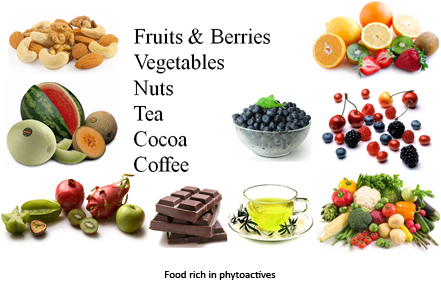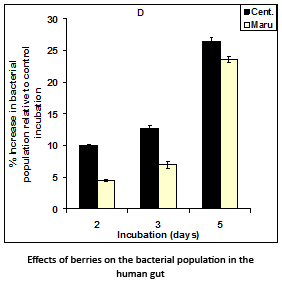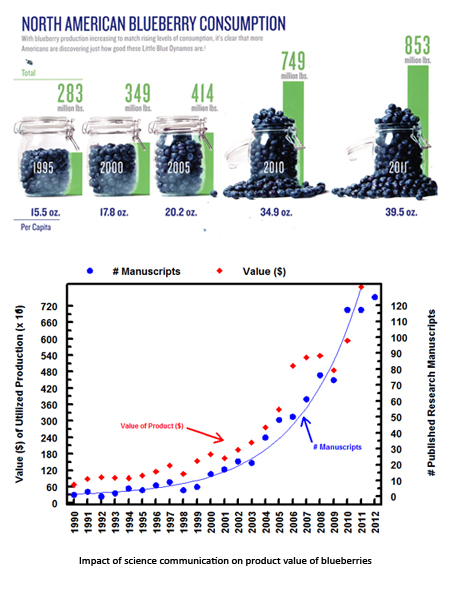The term “superfruit” refers to fruits that are purported to have exceptional nutritional benefits. Popular examples include pomegranate, mangosteen, acai berry, blackberry, blueberry, and cranberry.
Being classified as food, instead of pharmaceuticals, entrepreneurs can freely market superfruit products without the need for rigorous clinical trials. The lack of standardized double-blinded trials leaves the medical and scientific community with a certain amount of skepticism.
However, the literature is robust and expanding: epidemiological evidence and studies suggest that superfruits have positive effects such as maintaining health, increasing longevity, and providing immuno-protective benefits against a broad spectrum of chronic diseases.
What makes a fruit ‘super’?
 While the superfruit label was originally designed as a marketing tool for new or rebranded fruit products, there are some that deserve the title. The criteria that determine whether the fruit is super are the types and levels of nutrients present in the fruit and the extra-nutritional phytochemical components.
While the superfruit label was originally designed as a marketing tool for new or rebranded fruit products, there are some that deserve the title. The criteria that determine whether the fruit is super are the types and levels of nutrients present in the fruit and the extra-nutritional phytochemical components.
The nutritive value of a fruit is based on the concentrations and assortment of compounds essential to human growth and metabolism such as vitamins, minerals, and carbohydrates. While not absorbed by the body, dietary fibers can be categorized as non-essential nutrients because they facilitate in digestive health.
Also known as phytoactives, the extranutritional phytochemicals in fruits include betalains, carotenoids, and polyphenolics such as anthocyanin pigments, proanthocyanidins, and phenolic acid. The significant presence of phytoactives are purported to reduce the incidence of chronic human diseases and counter their symptoms, as well as bolster metabolism.
 Dietary anthocyanins, which are red pigments in berries and apples, have the ability to lower high blood glucose levels associated with type-2 diabetes, improve insulin sensitivity, depress postprandial glucose responses, and elevate satiety. Upon interaction with proanthocyanidins and phenolic acids, anthocyanins demonstrate anti-inflammatory and detoxifying capabilities integral to cancer chemoprevention, cardiovascular diseases, and neuroprotection. Meanwhile, carotenoids are chemopreventive phytoactives that can also help prevent macular degeneration and cardiovascular diseases. A range other phytoactives present in superfruits are linked to health-related benefits.
Dietary anthocyanins, which are red pigments in berries and apples, have the ability to lower high blood glucose levels associated with type-2 diabetes, improve insulin sensitivity, depress postprandial glucose responses, and elevate satiety. Upon interaction with proanthocyanidins and phenolic acids, anthocyanins demonstrate anti-inflammatory and detoxifying capabilities integral to cancer chemoprevention, cardiovascular diseases, and neuroprotection. Meanwhile, carotenoids are chemopreventive phytoactives that can also help prevent macular degeneration and cardiovascular diseases. A range other phytoactives present in superfruits are linked to health-related benefits.
To fully gain their health benefits, it is recommended to consume superfruits raw instead of processed. However, juice remains as the primary means of superfruit consumption for its convenience and availability. Meanwhile, fruit-derived supplements in pill form seldom retain the value of the whole fruit.
The high amount of phytoactives is the main selling point of superfruit products. Laboratory or clinical evidence linking superfruits to good health is a powerful marketing tool, leading to proactive purchasing from well-informed consumers. The allure of exotic tropical fruits has captured the interest of the American public, with mangosteen, papaya, mango, acai, and pomegranate commanding premium prices.
Validation
Even with the multitude of evidence supporting the health benefits of superfruits, phytoactives continue to provoke controversies in scientific and regulatory communities. These compounds are small-to-medium in molecular weight and the extra-nutritional benefits harder to pinpoint and quantify than nutrients. Different kinds of phytoactives are present in a single fruit, unlike the typical activity of pharmaceuticals. The efficacy of fruit extracts cannot simply be gauged using high throughput screens used in the pharmaceutical industry.
Another issue is the body’s low absorption of phytoactives, in spite of showing high activities in cell culture experiments. Research has revealed that certain food constituents can stabilize and foster a higher absorption of phytoactives. Advances in genomics and metabolomics technologies have allowed scientists to study the effect of metabolites from fruits on humans.
 Cranberry and Blueberry: Superfruit Successes
Cranberry and Blueberry: Superfruit Successes
Two indigenous North American berries have been a successfully marketed as superfruits: cranberry and blueberry. Cranberry fruits originated in New England and Eastern Canada, but have since become popular in North America, Europe, and Australasia. The juice has anti-adhesin properties, guarding against bacterial infections in the urinary tract and oral cavity. The last two decades, the popularity of cranberry juice skyrocketed as it can proactively combat urinary tract infections. Once only purchased for traditional celebrations of American Thanksgiving and Christmas, cranberries are now produced all year round for consumers worldwide.
Native Americans have long used wild lowbush blueberries (Vaccinium angustifolium) and the huckleberries (V. uliginosum) for medicinal purposes. Cultivated blueberries (V. corymbosum, V. asheii) also share the health benefits. Unlike cranberries, the demand for blueberries as superfruit is increasing based on its efficacy against multiple ailments: some cancers, cardiovascular diseases, neuro-degeneration, aging, metabolic syndrome like Type 2 diabetes mellitus, and other pathologies. However, the increase in demand also entailed an increase in the price of the fruit.
The way forward
Amidst the benefits, there are multiple reasons why superfruits are not in the typical diet. Some constraints include the relatively high cost, seasonal availability of fresh fruits, and loss of bioactivity after processing. The bulk and perishability of fruits is also an issue in certain situations. Hence, only a small fraction of the world consumes the recommended daily intake of fruits. To reach a wider audience, current research is aimed at developing stable, cost-effevtive, and portable snacks and functional food that preserve the phytoactives.
____________
This article is adapted from a presentation by Mary Ann Lila, Director, Plants for Human Health Institute, North Carolina State University, at the International Symposium on Superfruits: Myth or Truth, Vietnam, 1-3 July 2013
All photos are derived from the powerpoint presentation.
